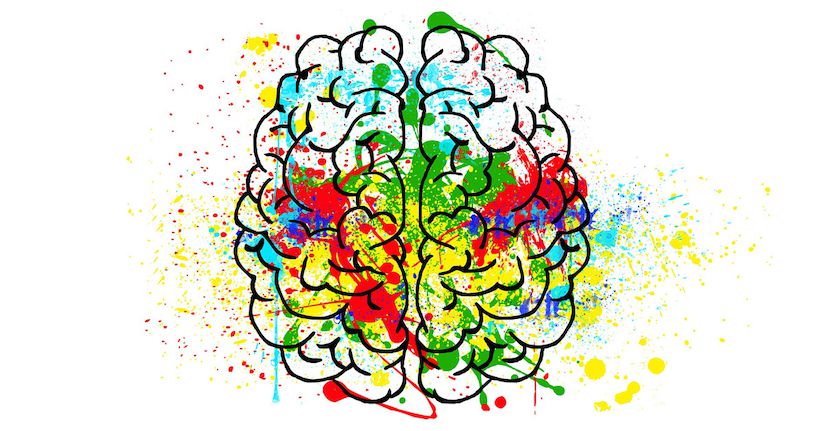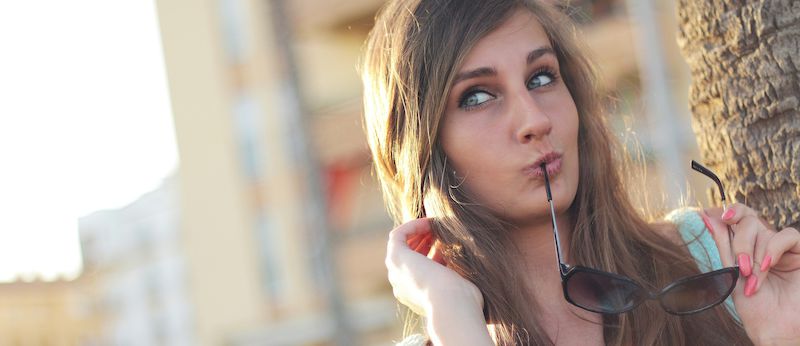Light Sensitivity and Anxiety
Painful sensitivity to light is a symptom associated with dozens of conditions and has been termed “photophobia” by medical professionals. Given that ‘phobia’ implies a fear of something—in this case, light—it may not be surprising to learn that light sensitivity is commonly associated with higher levels of anxiety, regardless of condition. Here we explore the link between the two and offer suggestions for managing it.
Research on Sensitivity to Light and Anxiety
If you have been diagnosed with an anxiety, panic or mood disorder, research suggests that you are already susceptible to greater light sensitivity.1-2 In fact, it has been shown that these individuals have a lower tolerance for light in general, particularly toward bright stimuli. However, researchers noted that type of light also matters. They cited fluorescent lights in particular as having the capability to induce panic attacks—further studies have supported this claim and revealed that physiological symptoms (e.g. elevated heart rate) can develop from exposure to fluorescents.3 It is not known whether or not anxiety causes light sensitivity, but it has been clearly established that there is a strong association between the two health concerns.
There is also growing evidence that light exposure—particularly at night—can directly affect parts of the brain that regulate mood and behavior. Workers with night shift jobs under constant lighting must often deal with disruptions to their sleep-wake cycle and as a result are shown to experience more depression-like episodes.11 Animal studies have further linked the specific introduction of blue light wavelengths at night with altered mood states.12 This puts renewed emphasis on adolescents staying up late on their electronic devices (smartphone, computer, etc) because of the amount of blue wavelengths they carry. This type of light also has been shown to disrupt melatonin production and sleep patterns—both of which can contribute to anxiety and other mood issues.
Ironically, people who lack appropriate light intake during the day also are more likely to develop depressive symptoms and have their sleep habits affected.11 Some of this can be improved with environmental changes to the lighting, but for some patients it may be tied to a specific condition. For instance, people with chronic light sensitivity due to migraine frequently choose the comfort of a dark room or dim lighting in order to fend off the physiological symptoms of attacks. Over time, this behavior can reduce their future tolerance for and increase their anxiousness toward light, and it can worsen social isolation as well. We discuss this in more detail below.

Migraine
In addition, light sensitivity and anxiety is tied to specific conditions. If you have migraine-related photophobia, chances are you have experienced a stressful situation where you were concerned light may be a trigger; or maybe you chose to avoid this type of scenario altogether to eliminate any risk. These are common stories from people with the headache disorder, and research validates their experiences. In fact, people with migraine who have light sensitivity between attacks (known as ‘interictal’ photophobia) are more likely to develop feelings of depression, anxiety and stress. One hypothesis for why this occurs is the result of the aforementioned social isolation or avoidance, which thus exacerbates these emotions. However, there may also be biological or genetic explanations as well.4-5
Furthermore, if a patient with migraine has persistent or chronic sensitivity to light, there is a greater likelihood of manifesting other emotional symptoms, such as anxiety, which could range from mild to moderate.6 A more recent study identified the micro emotions a person with migraine can immediately experience upon exposure to light: anger, hopelessness, fear and anxiety, to name a few. And we cannot overlook the fact that ANYBODY with migraine is already two to five times more likely to develop these psychiatric comorbidities with half of all patients experiencing some level of anxiousness.
Concussion and post-concussion syndrome
Concussion light sensitivity has also been linked to anxiety. One study showed that photophobia after a concussion was a greater predictor of mood-related side effects in teenage athletes. Their issues included irritability, aggression, anxiousness, depression, and more.7 In addition, it is possible that stress may worsen specific post-concussion symptoms and inhibit recovery and treatment.8 Although these were small studies, they reinforce the importance of exploring those mitigating symptoms—such as painful sensitivity to light—which may put patients at risk for other long-term problems.
Other conditions
Like migraine and concussion, behavior and mood disorders are also generally higher with conditions where light sensitivity is a prominent symptom. Although there is no direct connection with photophobia causing emotional issues or vice versa, conditions such as blepharospasm and dry eye are just a few that can lead to greater anxiety, stress and/or depression.9-10
Tips for Managing Anxiety and Light Sensitivity

Treat any underlying condition.
It’s important to see a doctor or appropriate specialist for any underlying health condition. Oftentimes, reducing the impact of migraine or post concussion syndrome can help reduce anxiety and stress.
Cognitive behavioral therapy.
Working with a certified professional to talk through emotional symptoms as well as develop healthy and positive habits and behaviors are critical to long-term success for patients.
Prescribed anxiety medications.
Given that photophobia and some of the associating conditions (e.g. migraine and concussion) are neurological in origin, it is possible that imbalances or issues with brain functioning may exacerbate or trigger anxiety. For these and other reasons, some medical professionals may prescribe medications for more serious anxiety disorders.
Manage light triggers and light sensitivity
One of the best ways to reduce photophobia and corresponding anxiety is to manage your light-specific triggers. For fluorescent lighting and screen-related triggers, you can use precision-tinted indoor glasses (like TheraSpecs) or wear a hat indoors. For outdoors, make sure you have a pair of polarized sunglasses to cut down on the brightness and glare from the sun. Other self care tips might include reducing overall screen time and getting better rest.
Yoga and meditation
Numerous studies have shown the benefits of mindfulness behaviors and activities such as yoga or meditation in the reduction of stress. Researchers have even recommended them specifically for chronic illnesses like migraine not only because they help divert focus away from the pain but can actually reduce the intensity of symptoms as well as the frequency of attacks or episodes.
References:
1 Letizia Bossini, MD, MirkoMartinucci, MD, Katia Paolini, MD, Paolo Castrogiovanni, MD. Panic-Agoraphobic Spectrum and Light Sensitivity in a General Population Sample in Italy. The Canadian Journal of Psychiatry. Vol 50, Issue 1, pp. 39-45; First published date: November-29-2016; 10.1177/070674370505000108.
2 Bossini L, Frank E, Campinoti G, Valdagno M, Caterini C, Castrogiovanni P, Fagiolini A. Photosensitivity and panic-agoraphobic spectrum: a pilot study. Riv Psichiatr. 2013 Mar-Apr;48(2):108-12. doi: 10.1708/1272.14034.
3 Hazell J, Wilkins AJ. A contribution of fluorescent lighting to agoraphobia. Clinical Trial. Psychol Med. 1990.
4 Bullock G. Migraine-Related Photophobia May Increase Risk for Depression. TheraSpecs. https://www.theraspecs.com/blog/migraine-photophobia-may-increase-risk-for-depression/
5 Llop S, Frandsen J, Digre K, Katz B, Crum A, Zhang C, Warner J. Increased prevalence of depression and anxiety in patients with migraine and interictal photophobia. The Journal of Headache and Pain. 201617:34. DOI: 10.1186/s10194-016-0629-6.
6 Llop S, Frandsen F, Katz BJ, Warner JE, Digre K. Depression and anxiety in migraine patients with and without chronic photophobia. Headache. 2010;50:S45.
7 After a Concussion, Which Teens Will Have Emotional Symptoms? https://www.aan.com/PressRoom/Home/PressRelease/1296.
8 Edmed, Shannon et al. Depression, anxiety, and stress as predictors of postconcussion-like symptoms in a non-clinical sample. Psychiatry Research, Volume 200, Issue 1, 41 - 45.
9 Hall TA, McGwin G Jr, Searcey K, Xie A, Hupp SL, Owsley C, Kline LB. Benign essential blepharospasm: risk factors with reference to hemifacial spasm. J Neuroophthalmol. 2005 Dec;25(4):280-5.
10 Yilmaz U, Gokler ME, Unsal A. Dry eye disease and depression-anxiety-stress: A hospital-based case control study in Turkey. Pakistan Journal of Medical Sciences. 2015;31(3):626-631. doi:10.12669/pjms.313.7091.
11Bedrosian TA, Nelson RJ. Timing of light exposure affects mood and brain circuits. Translational Psychiatry. 2017;7(1):e1017-. doi:10.1038/tp.2016.262.
12Bedrosian TA, Vaughn CA, Galan A, Daye G, Weil ZM, Nelson RJ. Nocturnal light exposure impairs affective responses in a wavelength-dependent manner. J Neurosci. 2013 Aug 7;33(32):13081-7. doi: 10.1523/JNEUROSCI.5734-12.2013.

TheraSpecs® Glasses for Light Sensitivity
Find the glasses that fit your needs and lifestyle, and stay protected from screens, fluorescents, unwanted blue light, sunlight, flashing lights, and more.
Shop Now



